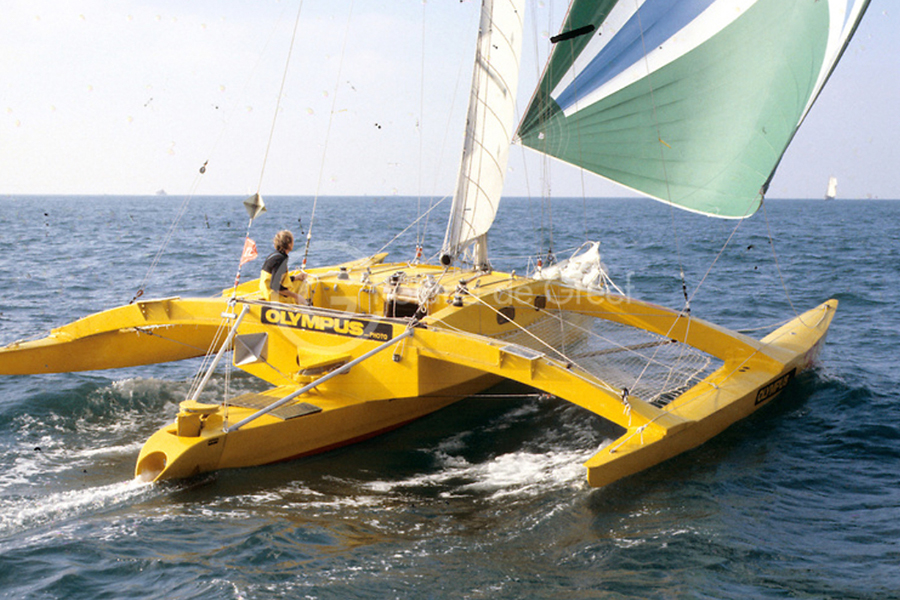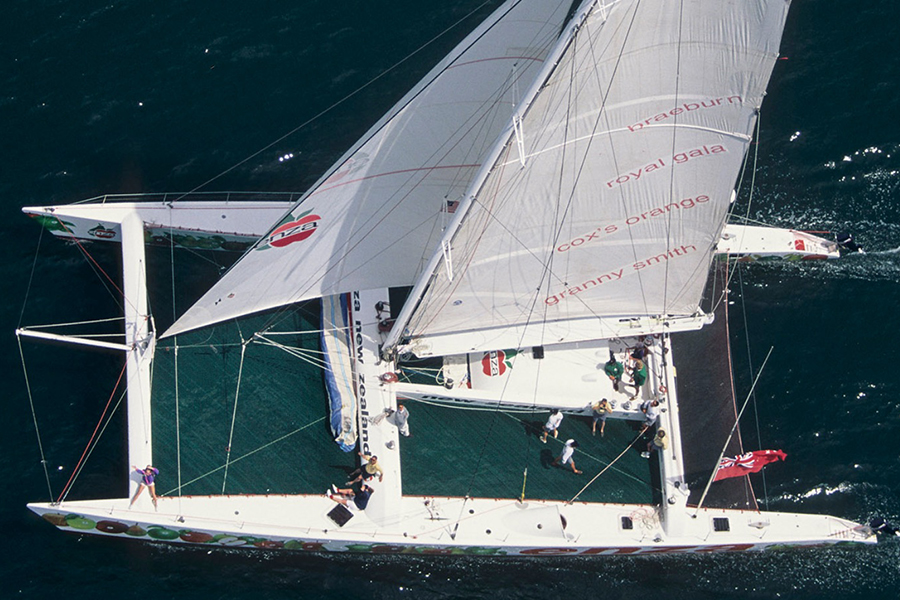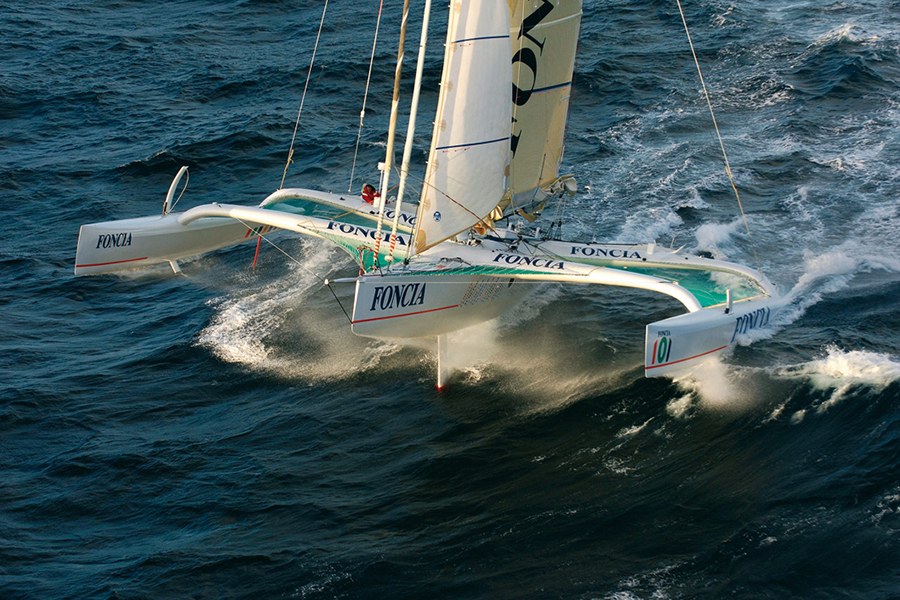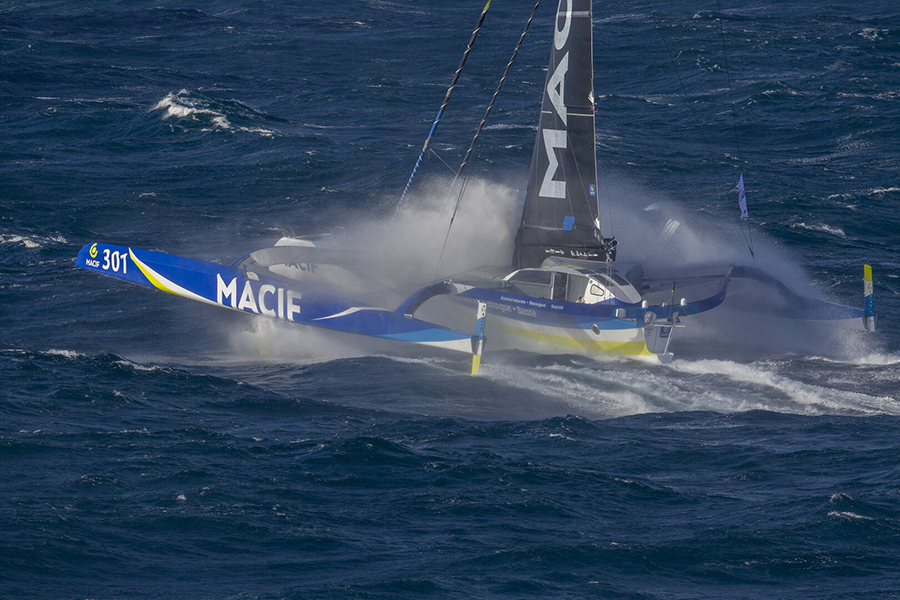TRIMARAN
Sail Racing = a Mature Technology
PROPELWIND technology combines our in-house extensive know-how in shipbuilding with the state-of-the-art technology applied to the ocean sail racing and America’s Cup. Since the very start back in 2008, PROPELWIND has been working closely with the pioneers and winners from South Brittany (France) for naval architecture, performance, structure, routing and « wind-harnessing ». It has proven an extremely efficient, fast, friendly and altogether exciting experience.
1960 - 1970
1980 - 1990
2000 - 2010
2020
Area
La Trinité sur Mer
La Rochelle
South Brittany
Lorient
Technology
Monohull, Trimaran
Catamaran
Trimaran
Wingsail, foils
Method
Art & intuition
Numeric
Hydro / aero CFD
Simulations
Reference speed (kts)
10
20
30
40
Location
PROPELWIND is located in Lorient, South Brittany.
Brittany rules the waves,
South Brittany rules the wind and the waves
Main Propulsion - Proven Reserves
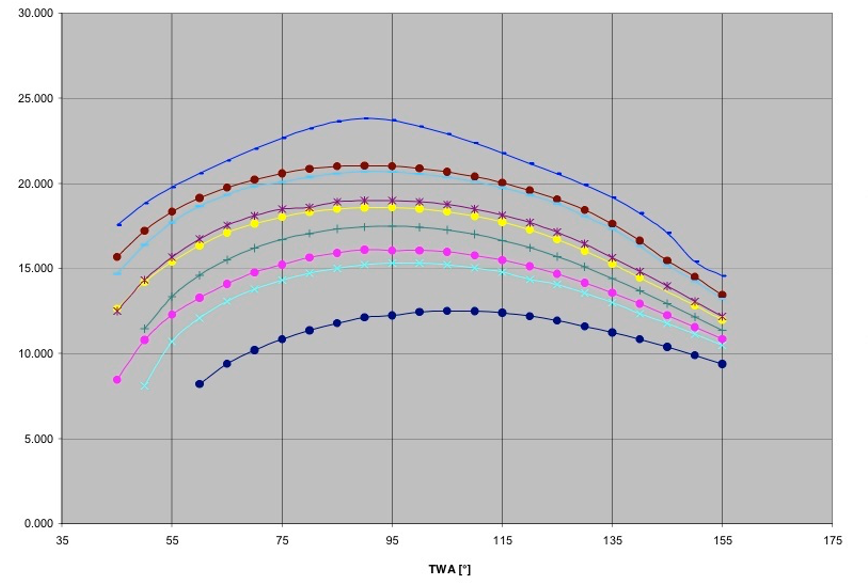
Ship speed vs True wind angle
True wind speed: 15 kts
- Tested in 2011 with integrated CFD (aero / hydro) : 9 configurations
- Catamaran 10,000 dwt
- Rigid Articulated Wingsails applied combinations:
- Height: 90 – 115 – 135m
- Number: 2 – 3 – 4 wingsails
- Maximum ship speed with 4 wingsails of 135m each (see graph – top of upper blue line):
- True wind angle: 90°
- True wind speed: 15 knots
- Ship speed: 24 knots
Our main principles for wind propulsion
- Wind for main propulsion is only feasible for low density cargo’s
- Mechanical propulsion is anyhow required for assistance : safety, manoeuvring and lack of wind situations
- Combining today the use of wind with compressed hydrogen for mechanical propulsion paves the way for real zero emission shipping in the future, when green hydrogen will be available.
- Reduced quantities of green fuel are needed; no need to wait for the extensive infrastructure, tanktainers carried to the ship by road are sufficient.
- The use of wind for main propulsion allows to minimize the storage of green fuel on board.
- Trimaran hull avoids water ballast tanks;
- Trimaran option allows for fully segregated clean fuel storage
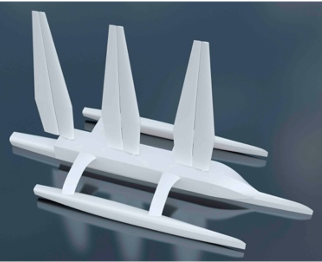
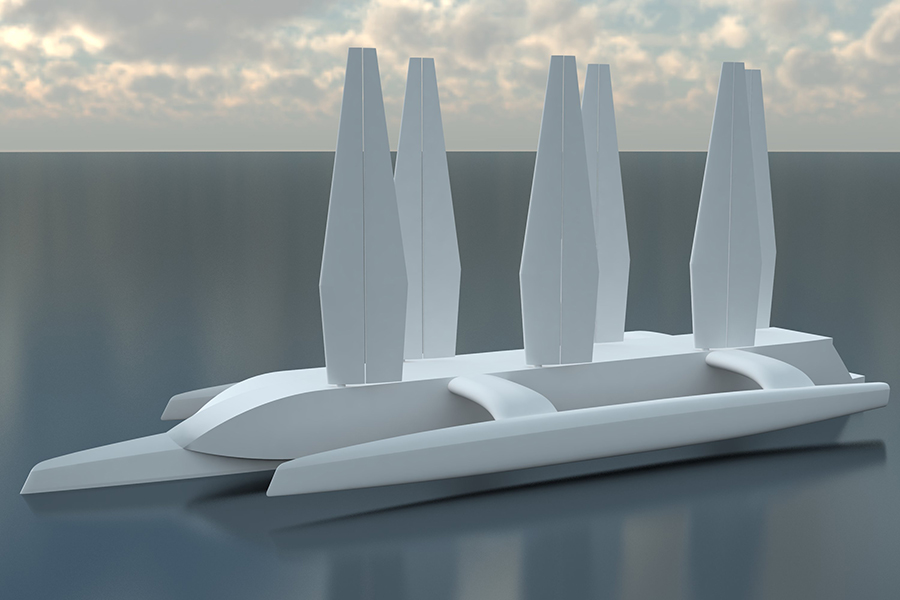
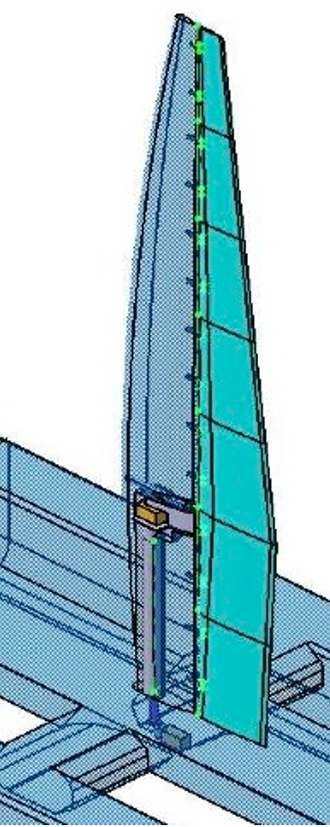

Our engine: the Rigid Articulated Wingsail
- Unstayed for 360 free rotation
- Tilting / folding system (patented)
- Automatic hydraulic control:
- Orientation
- Wing camber
- Flaps twist
- Steel mast, alu / composite flaps
- Very few moving parts
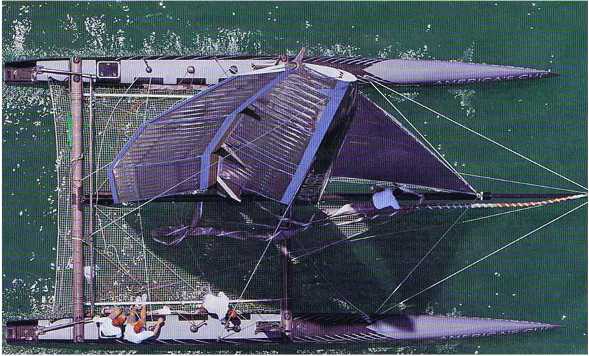
Concept Progress Status
- 2012: Extensive performance evaluation completed, including:
- State-of-the-art aero / hydro fluid dynamics (CFD)
- Structural Finite Elements Method
- Routing
- Catamaran and monohull
- 2016: PELICAN Express generic trimaran concept / Relevant cargoes identified:
- Containers
- Cruise
- Cars
- Liquid Hydrogen
- Light bulk
- Break bulk
- 2019: Definition of trimaran size range, hull configuration and target perfomances
- 2020: For the next development phase:
- Engineering cost estimate and time schedule
- Break-even forecast
- Outline Specification
- 2021: In line with shipping decarbonizing targets:
- Liquid Hydrogen carrier concept
- Patent for fuel storage, bunkering and side cargo handling
- Timeline for technology deployment
